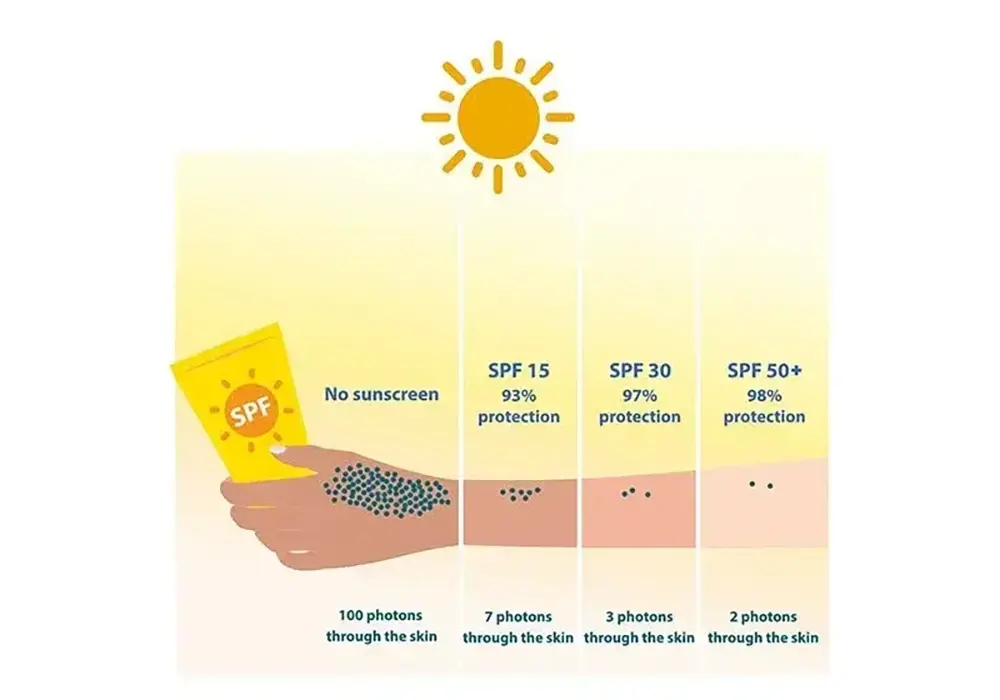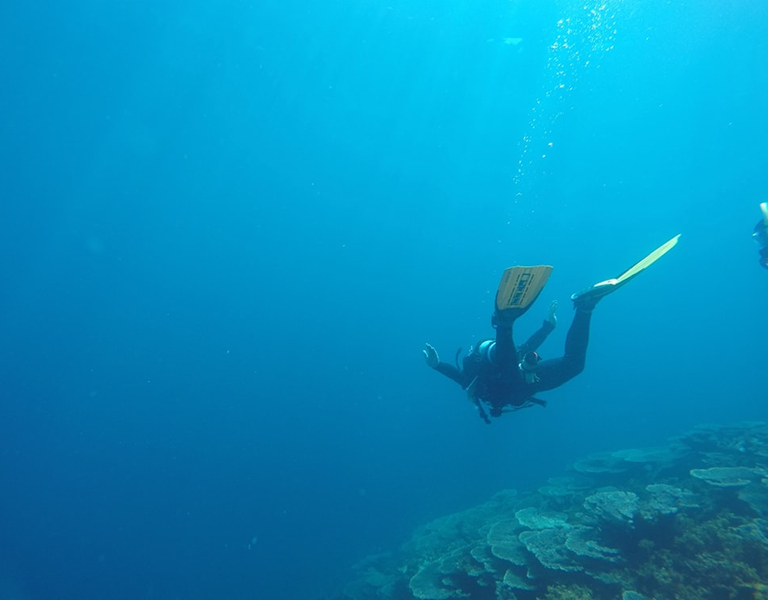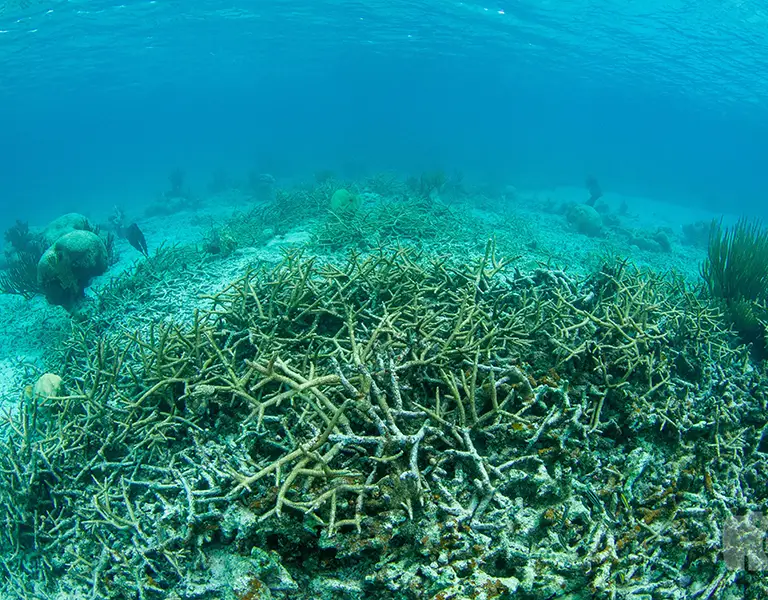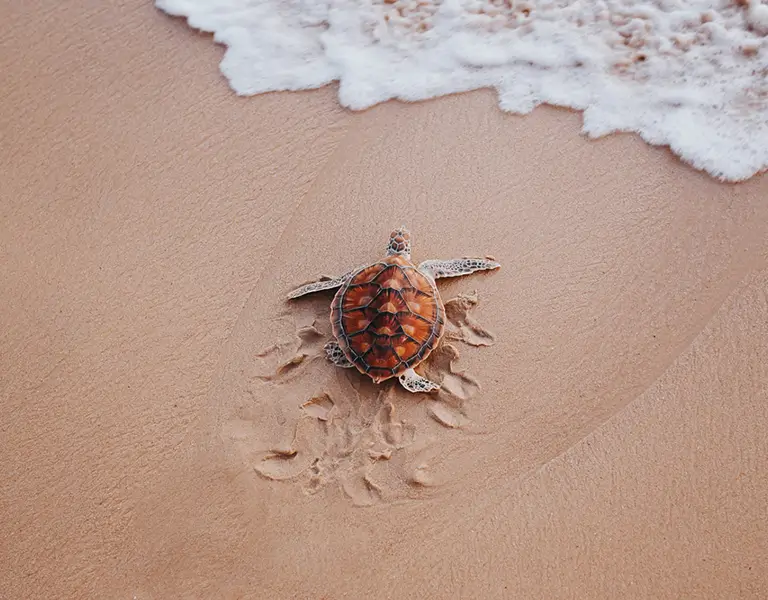Protecting your skin from harmful UV rays while safeguarding our precious coral reefs has never been more important. Understanding which reef safe sunscreen ingredients truly protect marine ecosystems empowers you to make choices that benefit both your health and our oceans.
Key Takeaways
- Mineral sunscreens containing zinc oxide and titanium dioxide are the safest options for coral reefs
- Chemical sunscreens with oxybenzone and octinoxate have been banned in Hawaii and other locations due to coral damage
- Non-nano formulations prevent particles from being absorbed by marine life
- Water-resistant formulas provide longer-lasting protection while reducing reapplication frequency
- Reef safe sunscreen choices directly support coral reef conservation and marine biodiversity
Understanding Reef Safe Sunscreen

What Makes Sunscreen Reef Safe
Reef safe sunscreen represents a crucial shift toward protecting marine ecosystems while maintaining effective sun protection. The primary distinction lies in the active ingredients used to block UV rays. Traditional chemical sunscreens often contain compounds that scientific research has linked to coral bleaching and ecosystem disruption.
When we apply sunscreen and enter the ocean, these chemicals wash off our skin and enter marine environments. Studies estimate that between 4,000 to 6,000 tons of sunscreen enter coral reef areas annually, creating significant environmental impact1. This staggering amount highlights why choosing reef safe sunscreen matters for ocean conservation.
Marine biologists have identified specific chemicals that contribute to coral stress and bleaching events. These harmful chemicals interfere with coral reproduction, growth, and resilience against climate change. By understanding which ingredients pose risks, we can make informed decisions about our sun protection choices.
The Science Behind Coral Damage
Research published in the Archives of Environmental Contamination and Toxicology demonstrates how certain sunscreen chemicals cause coral bleaching at concentrations as low as 62 parts per trillion2. This concentration is equivalent to a drop of water in six Olympic-sized swimming pools, illustrating the extreme sensitivity of reef ecosystems to chemical contamination.
Coral reefs support approximately 25% of all marine species despite covering less than 1% of the ocean floor3. These ecosystems provide coastal protection, support fishing industries, and generate billions in tourism revenue annually. When sunscreen chemicals damage coral reefs, the ripple effects impact entire marine food webs and coastal communities.
The mechanism of damage occurs when harmful chemicals cause coral polyps to expel their symbiotic algae, leading to bleaching. Without these algae, corals lose their primary food source and become more susceptible to disease and death. This process weakens entire reef systems and reduces their ability to recover from environmental stressors.
Mineral Sunscreens: The Foundation of Reef Protection
Zinc Oxide: The Gold Standard
Zinc oxide stands as the most effective reef safe sunscreen ingredient available today. This mineral compound creates a physical barrier on your skin that reflects and scatters UV rays rather than absorbing them chemically. Unlike chemical sunscreens that penetrate the skin, zinc oxide sits on the surface, providing immediate protection upon application.
The effectiveness of zinc oxide extends across the entire UV spectrum, offering broad-spectrum protection against both UVA and UVB rays. This comprehensive coverage makes zinc oxide particularly valuable for extended sun exposure during snorkeling, swimming, or other water activities near coral reefs.
Environmental studies consistently show that zinc oxide does not contribute to coral bleaching or marine ecosystem disruption when formulated properly. The key factor is particle size, which we’ll explore in detail when discussing non-nano formulations.
Titanium Dioxide: Reliable Protection
Titanium dioxide represents another excellent reef safe sunscreen ingredient that provides effective UV protection without harming marine life. This mineral works similarly to zinc oxide by creating a physical barrier that reflects UV rays away from your skin.
Titanium dioxide excels at blocking UVB rays, which are primarily responsible for sunburns and immediate skin damage. When combined with zinc oxide, titanium dioxide creates comprehensive protection that rivals any chemical sunscreen formula.
The environmental safety profile of titanium dioxide makes it an ideal choice for conscious consumers. Studies have not found evidence linking properly formulated titanium dioxide to coral damage or marine ecosystem disruption, making it a cornerstone ingredient in reef safe sunscreen formulations.
Combining Mineral Ingredients
Many effective reef safe sunscreen formulations combine zinc oxide and titanium dioxide to optimize protection and user experience. This combination allows manufacturers to reduce the concentration of each individual mineral while maintaining high SPF levels and broad-spectrum coverage.
The synergistic effect of combining these minerals often results in better skin feel and reduced white cast compared to single-mineral formulations. This improvement in cosmetic elegance encourages consistent use, which is essential for effective sun protection.
Advanced formulation techniques allow mineral sunscreens to provide protection comparable to chemical alternatives while maintaining reef safety. These innovations include improved particle dispersion, enhanced skin adhesion, and water resistance that lasts through swimming and snorkeling activities.
Chemical Sunscreens: Understanding the Risks

Oxybenzone: The Primary Concern
Oxybenzone represents one of the most problematic ingredients found in traditional sunscreens. This chemical UV filter has been extensively studied and consistently linked to coral bleaching, DNA damage in marine organisms, and disruption of coral reproduction.
Research indicates that oxybenzone accumulates in coral tissues and acts as an endocrine disruptor, interfering with normal biological processes. The chemical also increases coral susceptibility to viral infections and reduces coral resilience against environmental stressors like warming ocean temperatures.
Hawaii became the first U.S. state to ban sunscreens containing oxybenzone, recognizing the significant threat this chemical poses to coral reef ecosystems. This landmark legislation demonstrates the growing awareness of sunscreen environmental impact and the need for reef safe alternatives.
Octinoxate: Another Harmful Chemical
Octinoxate, also known as ethylhexyl methoxycinnamate, is another chemical UV filter that poses risks to coral reef health. Studies have shown that octinoxate contributes to coral bleaching and can disrupt the normal development of marine organisms.
This chemical has been found to accumulate in marine environments and persist in coral tissues long after initial exposure. The bioaccumulation of octinoxate in marine food webs raises concerns about long-term ecosystem health and stability.
Like oxybenzone, octinoxate has been banned in several jurisdictions, including Hawaii and Key West, Florida. These regulatory actions reflect growing scientific consensus about the environmental risks posed by chemical sunscreen ingredients.
Other Problematic Ingredients
Several other chemical UV filters have raised environmental concerns among marine biologists and coral researchers. These include avobenzone, homosalate, octocrylene, and various other synthetic compounds commonly found in chemical sunscreens.
While research on these ingredients is ongoing, the precautionary principle suggests avoiding chemicals with potential environmental risks when safer alternatives exist. Reef safe sunscreen formulations eliminate these questionable ingredients in favor of proven mineral alternatives.
The cumulative effect of multiple chemical ingredients in marine environments may be greater than the sum of their individual impacts. This synergistic toxicity underscores the importance of choosing reef safe sunscreen products that eliminate all potentially harmful chemicals.
Non Nano Formulations: Size Matters

Understanding Nanoparticles
The term “non nano” refers to mineral particles larger than 100 nanometers in diameter. This size specification is crucial for reef safe sunscreen because smaller nanoparticles can be absorbed by marine organisms, potentially causing cellular damage and disrupting biological processes.
Nanoparticles can penetrate coral tissue and accumulate in marine organisms, leading to oxidative stress and cellular dysfunction. Research has shown that nano-sized titanium dioxide and zinc oxide particles can cause DNA damage in marine life, even though these minerals are generally considered reef safe in larger particle sizes.
Non nano formulations ensure that mineral particles remain on the skin surface rather than penetrating biological systems. This approach maximizes UV protection while minimizing environmental impact, making non nano reef safe sunscreen the optimal choice for ocean activities.
Benefits of Larger Particles
Larger mineral particles in non nano reef safe sunscreen formulations provide several advantages beyond environmental safety. These particles are less likely to be absorbed through the skin, reducing potential systemic exposure and allergic reactions in sensitive individuals.
The optical properties of larger particles often result in better UV reflection and scattering, potentially improving overall sun protection effectiveness. While larger particles may create more visible white cast initially, modern formulation techniques have significantly reduced this cosmetic concern.
Non nano particles also tend to be more water resistant, as they are less likely to be washed away during swimming or sweating. This improved staying power enhances protection during extended water activities while reducing the frequency of reapplication needed.
Regulatory Considerations
Various countries and regions have implemented or are considering regulations requiring sunscreen manufacturers to clearly label nano versus non nano formulations. These labeling requirements help consumers make informed choices about reef safe sunscreen products.
The European Union requires sunscreen products containing nanoparticles to include “nano” in the ingredient list, providing transparency for environmentally conscious consumers. Similar regulations are being developed in other regions as awareness of nanoparticle environmental impact grows.
When choosing reef safe sunscreen, look for products that specifically state “non nano” on their labels. This designation ensures that the mineral ingredients will not contribute to marine ecosystem disruption through particle absorption by coral and other marine organisms.
Best Reef Safe Sunscreen Ingredients

Zinc Oxide Benefits
Zinc oxide offers unparalleled protection as a reef safe sunscreen ingredient. Its broad-spectrum coverage protects against both UVA rays that cause premature aging and UVB rays that cause sunburn. This comprehensive protection makes zinc oxide ideal for sensitive skin and extended outdoor activities.
The photostability of zinc oxide means it doesn’t break down under UV exposure like some chemical ingredients. This stability ensures consistent protection throughout your time in the sun and reduces the need for frequent reapplication during water activities.
Zinc oxide also provides natural antimicrobial properties that can benefit skin health. These properties may help prevent skin infections and irritation, particularly important when spending time in marine environments where minor cuts and scrapes are common.
Titanium Dioxide Advantages
Titanium dioxide excels as a reef safe sunscreen ingredient due to its exceptional UVB protection and environmental safety profile. This mineral provides immediate protection upon application without requiring absorption time like chemical sunscreens.
The hypoallergenic nature of titanium dioxide makes it suitable for individuals with sensitive skin who may react to chemical UV filters. This gentle protection is particularly valuable for families with children or individuals with skin conditions like eczema or rosacea.
Titanium dioxide’s excellent adhesion properties help reef safe sunscreen formulations maintain protection during swimming and water sports. This water resistance reduces product wash-off into marine environments while ensuring consistent skin protection.
Natural and Organic Options
Some reef safe sunscreen formulations incorporate additional natural ingredients that provide supplementary benefits without harming marine ecosystems. These may include natural oils, plant extracts, and antioxidants that support skin health while maintaining environmental safety.
Red raspberry seed oil, for example, provides natural SPF protection and can enhance the effectiveness of mineral sunscreens. Coconut oil offers natural antimicrobial properties and skin conditioning benefits that complement reef safe formulations.
However, it’s important to note that natural doesn’t automatically mean reef safe. Some natural ingredients can still impact marine environments, so choosing products specifically formulated and tested for reef safety remains essential.
Sensitive Skin Considerations

Gentle Mineral Protection
Reef safe sunscreen formulated with mineral ingredients offers superior protection for sensitive skin types. Unlike chemical UV filters that can cause allergic reactions, contact dermatitis, and other skin sensitivities, minerals like zinc oxide and titanium dioxide are generally well-tolerated by even the most sensitive skin.
The physical barrier created by mineral sunscreens sits on top of the skin rather than being absorbed, reducing the likelihood of allergic reactions and skin irritation. This approach is particularly beneficial for individuals with conditions like eczema, psoriasis, or rosacea that make skin more reactive to chemical ingredients.
Many dermatologists recommend reef safe sunscreen with mineral ingredients as the first choice for patients with sensitive skin or a history of sunscreen allergies. The gentle nature of these formulations makes them suitable for daily use and extended wear during ocean activities.
Formulation Considerations for Comfort
Modern reef safe sunscreen formulations have overcome many of the traditional drawbacks associated with mineral sunscreens. Advanced manufacturing techniques create smoother textures that spread easily and absorb well, reducing the sticky or greasy feel that some users experienced with older formulations.
Innovative particle treatments and formulation technologies have significantly reduced the white cast associated with traditional mineral sunscreens. While some visible residue may still occur with higher SPF formulations, the cosmetic elegance of reef safe sunscreen has improved dramatically in recent years.
The addition of moisturizing ingredients and skin conditioners in reef safe sunscreen formulations helps maintain skin hydration and comfort during extended sun exposure. These additions are particularly valuable for individuals with naturally dry or sensitive skin who spend considerable time in and around water.
Children and Reef Safe Options
Pediatric dermatologists consistently recommend reef safe sunscreen with mineral ingredients for children’s delicate skin. The gentle nature of zinc oxide and titanium dioxide makes them ideal for young skin that may be more susceptible to chemical sensitivities and allergic reactions.
Children’s frequent water play and tendency to touch their faces make mineral reef safe sunscreen particularly appropriate. The surface barrier protection reduces the risk of eye irritation and ingestion that can occur with chemical formulations.
Teaching children about reef safe sunscreen choices early helps establish environmentally conscious habits that will benefit both their health and marine ecosystems throughout their lives. Family reef protection starts with smart sunscreen choices that demonstrate care for both skin and ocean health.
Safe Sunscreens vs. Harmful Chemicals
Identifying Harmful Ingredients
Reading sunscreen labels carefully is essential for identifying products that contain ingredients harmful to coral ecosystems. The most significant offenders include oxybenzone, octinoxate, octocrylene, homosalate, 4-methylbenzylidene camphor, and various other synthetic UV filters that have been linked to marine ecosystem damage.
Some manufacturers may use alternative names for these chemicals, making label reading challenging for consumers. Oxybenzone may be listed as benzophenone-3, while octinoxate might appear as ethylhexyl methoxycinnamate. Familiarizing yourself with these alternative names helps ensure you choose truly reef safe sunscreen products.
Beyond UV filters, some sunscreens contain additional ingredients that can harm marine life. These include certain preservatives, fragrances, and colorants that may disrupt marine ecosystems. Reef safe sunscreen formulations typically minimize or eliminate these potentially problematic additives.
Making the Switch to Reef Safe
Transitioning to reef safe sunscreen represents a positive step toward marine conservation that doesn’t require sacrificing sun protection effectiveness. Modern mineral formulations provide excellent UV protection while supporting coral reef health and marine biodiversity.
The adjustment period for switching to reef safe sunscreen is typically minimal, as improvements in formulation technology have created products that feel and perform similarly to chemical alternatives. Many users find that mineral sunscreens actually provide superior protection and skin comfort once they adapt to the application differences.
Cost considerations should factor in the long-term value of reef safe sunscreen choices. While some mineral formulations may carry higher upfront costs, their environmental benefits and often superior protection justify the investment in both personal and planetary health.
Environmental Impact Assessment
The environmental impact of sunscreen choice extends beyond immediate coral reef protection to broader marine ecosystem health. Reef safe sunscreen ingredients break down more readily in marine environments, reducing bioaccumulation and long-term ecosystem disruption.
Studies have shown that switching to reef safe sunscreen can have measurable positive impacts on local coral reef health when adopted by significant portions of the population. Popular snorkeling and diving destinations have documented improved coral condition following the implementation of reef safe sunscreen requirements.
The cumulative effect of individual reef safe sunscreen choices contributes to global coral conservation efforts. When multiplied across millions of ocean users annually, these choices represent a significant opportunity to reduce anthropogenic stress on coral reef ecosystems worldwide.
Natural Sunscreen Options

Plant-Based Ingredients
Some reef safe sunscreen formulations incorporate natural plant-based ingredients that provide additional UV protection and skin benefits without harming marine ecosystems. Red raspberry seed oil naturally contains SPF properties and antioxidants that complement mineral UV filters.
Coconut oil offers natural antimicrobial properties and modest UV protection that can enhance reef safe sunscreen formulations. However, plant oils alone do not provide sufficient protection for extended sun exposure and should be used in combination with proven mineral ingredients.
Shea butter and other natural moisturizers in reef safe sunscreen formulations help maintain skin hydration and prevent the drying effects of sun and saltwater exposure. These natural additions improve product feel and skin health without compromising environmental safety.
Antioxidant Enhancement
Natural antioxidants like vitamin E, vitamin C, and various plant extracts are often incorporated into reef safe sunscreen formulations to provide additional skin protection beyond UV blocking. These ingredients help neutralize free radicals created by UV exposure and environmental stressors.
Green tea extract, in particular, has shown promise in enhancing sun protection and reducing inflammation associated with UV exposure. When combined with mineral UV filters, these antioxidants create comprehensive protection that supports both immediate and long-term skin health.
The synergistic effect of combining mineral UV protection with natural antioxidants in reef safe sunscreen formulations may provide superior protection compared to either approach alone. This comprehensive protection strategy aligns with holistic approaches to health and environmental stewardship.
Avoiding Problematic Natural Ingredients
While natural ingredients are generally preferable in reef safe sunscreen formulations, it’s important to note that not all natural substances are automatically safe for marine environments. Some essential oils and plant extracts can be toxic to marine life or cause ecological disruption.
Certain natural preservatives and fragrances may also impact marine ecosystems, even if they are derived from natural sources. Reef safe sunscreen manufacturers carefully select natural ingredients based on their environmental safety profiles rather than simply their natural origin.
The most effective reef safe sunscreen products focus primarily on proven mineral UV filters while using natural ingredients judiciously to enhance product performance and user experience without compromising environmental safety.
Reef Friendly Formulation Science

Advanced Mineral Processing
Modern reef safe sunscreen manufacturing employs sophisticated techniques to optimize mineral particle properties for both protection effectiveness and user experience. These processes can modify particle shape, surface treatment, and dispersion characteristics to improve performance4.
Particle coating technologies help reduce the photocatalytic activity of titanium dioxide while maintaining UV protection effectiveness. These treatments prevent the formation of free radicals that could potentially cause skin irritation while preserving the environmental safety that makes reef safe sunscreen the preferred choice.
Controlled particle size distribution in reef safe sunscreen formulations helps optimize the balance between UV protection, cosmetic elegance, and environmental safety. Manufacturers can fine-tune these parameters to create products that meet specific performance requirements while maintaining reef safety.
Water Resistance Technology
Achieving effective water resistance in reef safe sunscreen requires specialized formulation approaches that help mineral ingredients adhere to skin during water activities. Film-forming polymers and natural waxes can enhance water resistance without compromising environmental safety.
The water resistance of reef safe sunscreen is particularly important for marine activities, as products that wash off quickly not only reduce protection effectiveness but also increase the amount of ingredients entering marine environments. Improved water resistance benefits both users and coral reefs.
Testing water resistance in reef safe sunscreen formulations involves standardized procedures that measure protection retention after specified periods of water immersion. These tests ensure that products maintain their stated SPF levels during typical swimming and snorkeling activities.
Innovation in Application
Recent innovations in reef safe sunscreen application technology have addressed traditional concerns about mineral sunscreen user experience. These include spray formulations, stick formats, and tinted options that make application easier and more appealing to users.
Spray reef safe sunscreen formulations require careful engineering to ensure even coverage and adequate protection while maintaining the environmental safety profile of mineral ingredients. These products offer convenience for large surface area application and reapplication during outdoor activities.
Stick formats for reef safe sunscreen provide precise application for areas like the face, lips, and around the eyes while minimizing waste and mess. The concentrated nature 5of stick formulations often provides enhanced water resistance and longevity.
SPF 50 and High Protection

Understanding SPF Ratings
SPF 50 reef safe sunscreen provides excellent protection against UVB rays, blocking approximately 98% of these harmful rays when applied correctly. This high level of protection is particularly valuable for extended water activities and high UV exposure situations common in tropical marine environments.
The relationship between SPF numbers and protection is not linear, with SPF 50 providing only marginally better protection than SPF 30, which blocks about 97% of UVB rays. However, the higher SPF can provide a margin of safety for real-world application where coverage may be less than the laboratory standard.
Reef safe sunscreen with SPF 50 ratings requires careful formulation to achieve high protection levels using only mineral ingredients. This typically involves higher concentrations of zinc oxide and titanium dioxide, which can affect product feel and appearance.
Broad Spectrum Protection
True sun protection requires protection against both UVA and UVB rays, making broad-spectrum designation essential in reef safe sunscreen selection. UVA rays penetrate deeper into the skin and contribute to premature aging and skin cancer development.
Zinc oxide naturally provides excellent broad-spectrum protection, making it particularly valuable in high SPF reef safe sunscreen formulations. Titanium dioxide primarily protects against UVB rays, so broad-spectrum products typically combine both minerals for comprehensive coverage.
The broad-spectrum effectiveness of reef safe sunscreen is tested using standardized protocols that measure protection across the entire UV spectrum. Products must meet specific criteria to earn broad-spectrum designation, ensuring comprehensive protection for users.
Application for Maximum Effectiveness
Achieving the stated SPF protection from reef safe sunscreen requires proper application technique and adequate product quantity. Most people apply significantly less sunscreen than the amount used in SPF testing, reducing actual protection levels.
The standard application rate for SPF testing is 2 milligrams per square centimeter of skin, which translates to approximately one ounce (30 milliliters) of reef safe sunscreen for full body coverage of an average adult. This amount may seem excessive but is necessary for optimal protection.
Reapplication of reef safe sunscreen every two hours, or more frequently during swimming and water activities, is essential for maintaining protection levels. Even water-resistant formulations gradually lose effectiveness through swimming, sweating, and towel drying.
Minimal White Cast Solutions
Formulation Improvements
Modern reef safe sunscreen formulations have significantly reduced the white cast traditionally associated with mineral sunscreens through advances in particle processing and formulation technology. These improvements make mineral products more cosmetically acceptable without compromising protection or environmental safety.
Particle size optimization in reef safe sunscreen helps minimize visible residue while maintaining effective UV protection. Manufacturers have found optimal size ranges that provide excellent coverage with reduced white cast, making these products more appealing to users concerned about appearance.
Tinted reef safe sunscreen options provide another solution to white cast concerns while maintaining environmental safety. These products incorporate iron oxides and other colorants that match various skin tones, providing natural-looking coverage that blends seamlessly with skin.
Application Techniques
Proper application technique can significantly reduce white cast appearance when using reef safe sunscreen. Warming the product between your hands before application helps improve spreadability and reduces visible residue.
Applying reef safe sunscreen in thin layers and allowing adequate time for absorption between applications can minimize white cast while ensuring adequate protection. This technique requires patience but results in better cosmetic appearance and user satisfaction.
Blending reef safe sunscreen thoroughly during application, particularly around the hairline, ears, and other areas where white cast is most noticeable, helps achieve more even coverage and natural appearance.
Product Selection Strategies
Choosing reef safe sunscreen formulations specifically designed for your skin type can help minimize white cast concerns. Products formulated for darker skin tones often incorporate tinting or use particle treatments that reduce visible residue.
Higher zinc oxide concentrations in reef safe sunscreen typically result in more white cast, so balancing protection needs with cosmetic preferences may involve selecting products with moderate SPF levels and optimal zinc oxide concentrations.
Reading user reviews and testing small amounts of reef safe sunscreen products before purchasing full sizes can help identify formulations that work well with your skin tone and application preferences while maintaining environmental safety standards.
Ocean Protection Through Sunscreen Choice
Marine Ecosystem Impact
The choice to use reef safe sunscreen represents a direct action individuals can take to protect marine ecosystems. Given that millions of people visit coral reef areas annually, the cumulative impact of sunscreen ingredient choices has measurable effects on coral health and marine biodiversity.
Research indicates that reef ecosystems exposed to high concentrations of harmful sunscreen chemicals show increased bleaching rates, reduced reproduction success, and greater susceptibility to diseases. By choosing reef safe sunscreen, ocean users directly reduce these environmental stressors.
The protection of coral reefs through reef safe sunscreen choices supports entire marine ecosystems. Coral habitats serve as nurseries for countless fish species, provide coastal protection from storms and erosion, and support marine biodiversity that extends far beyond the reef itself.
Global Conservation Efforts
Reef safe sunscreen adoption aligns with broader global conservation initiatives aimed at protecting marine environments. Organizations worldwide are promoting reef safe sunscreen use as part of comprehensive coral conservation strategies that address multiple threats to reef health.
Educational campaigns about reef safe sunscreen have proven effective in changing consumer behavior and industry practices. As awareness grows, more manufacturers are developing reef safe formulations, creating positive market pressure for environmentally responsible products.
The integration of reef safe sunscreen requirements into marine protected area management plans demonstrates the recognized importance of this issue. Popular diving and snorkeling destinations increasingly require or strongly encourage reef safe sunscreen use to protect their marine resources.
Individual Action, Collective Impact
Each person’s decision to choose reef safe sunscreen contributes to a larger movement toward marine conservation. When multiplied across millions of ocean users, these individual choices create significant positive environmental impact that supports coral reef resilience and recovery.
The ripple effect of reef safe sunscreen adoption extends beyond direct environmental benefits to include increased awareness of marine conservation issues and support for broader environmental protection initiatives. Users often become advocates for coral reef protection after understanding the connection between their sunscreen choices and marine health.
Sharing knowledge about reef safe sunscreen with family, friends, and fellow ocean enthusiasts helps amplify positive impact. Education and example-setting create expanding circles of environmental awareness that contribute to long-term coral reef conservation success.
Water Resistant Protection

Understanding Water Resistance Ratings
Water resistance in reef safe sunscreen is measured using standardized testing protocols that evaluate protection retention after specified periods of water immersion. Products labeled “water resistant” maintain their SPF protection for 40 minutes of water activity, while “very water resistant” products maintain protection for 80 minutes.
The water resistance of reef safe sunscreen is achieved through formulation techniques that help mineral ingredients adhere to skin during water activities. This adherence is crucial for maintaining protection while minimizing the amount of product that washes into marine environments.
Testing for water resistance involves controlled laboratory conditions that may differ from real-world use scenarios. Factors like water temperature, salinity, and activity level can all affect how long reef safe sunscreen maintains its protective effectiveness during ocean activities.
Formulation Strategies
Achieving effective water resistance in reef safe sunscreen requires careful selection of film-forming ingredients that help create a protective barrier on the skin. These ingredients must provide adherence without compromising the environmental safety that makes reef safe sunscreen the preferred choice for marine activities.
Natural waxes and polymers in reef safe sunscreen formulations can enhance water resistance while maintaining biodegradability and environmental safety. These ingredients help create a flexible film that moves with the skin while resisting removal by water and friction.
The balance between water resistance and ease of removal is important in reef safe sunscreen design. Products should resist washing off during intended activities but still be removable with soap and water to prevent pore clogging and skin irritation.
Reapplication Guidelines
Even the most water-resistant reef safe sunscreen requires reapplication to maintain optimal protection during extended water activities. The 40 or 80-minute water resistance ratings represent minimum protection times, and actual reapplication needs may vary based on individual circumstances.
Factors affecting reef safe sunscreen longevity include water conditions, activity intensity, and individual sweating rates. Vigorous swimming, diving, or water sports may require more frequent reapplication than gentle floating or wading activities.
Towel drying can significantly reduce reef safe sunscreen effectiveness, even with water-resistant formulations. Gentle patting dry followed by immediate reapplication helps maintain consistent protection throughout extended water activities.
Conclusion
Choosing reef safe sunscreen represents a powerful way to protect both your skin and our precious marine ecosystems. By understanding the science behind reef safe ingredients like zinc oxide and titanium dioxide, and avoiding harmful chemicals like oxybenzone and octinoxate, you can enjoy sun protection that aligns with marine conservation values.
The advances in reef safe sunscreen formulation have eliminated most of the traditional drawbacks associated with mineral sunscreens, creating products that provide excellent protection with improved user experience. From minimal white cast to enhanced water resistance, modern reef safe sunscreen options meet the needs of today’s environmentally conscious consumers.
Your sunscreen choice matters more than you might realize. With millions of people visiting coral reef areas annually, the collective impact of choosing reef safe sunscreen creates measurable positive change for marine ecosystems. By making this simple switch, you become part of the solution for coral reef conservation while maintaining the sun protection you need for healthy outdoor activities.
The future of coral reef ecosystems depends on actions we take today. Choosing reef safe sunscreen is one immediate, practical step every ocean enthusiast can take to support marine conservation. Combined with broader efforts to address climate change and reduce pollution, these individual choices contribute to a brighter future for these habitats and the countless species that depend on them.
About Coral Vita
Coral Vita is a mission-driven company dedicated to restoring our world’s dying and damaged reefs. Using innovative land-based farming techniques, Coral Vita grows diverse and resilient corals in months instead of the decades they take in nature. These corals are then transplanted into threatened reefs, helping to preserve ocean biodiversity while protecting coastal communities that depend on healthy reefs for protection, food, and income.
Founded by environmental entrepreneurs Sam Teicher and Gator Halpern, Coral Vita’s high-tech coral farms incorporate breakthrough methods to restore reefs in the most effective way possible. In 2021, the company was recognized as the inaugural winner of Prince’s William’s Revive Our Oceans Earthshot Prize Winner for their pioneering work in coral restoration.
To learn more about Coral Vita’s work or to get involved in coral reef conservation efforts, visit their website at www.coralvita.co or contact them directly through their Contact Us page.
FAQ
What ingredients make sunscreen reef safe?
Reef safe sunscreen contains mineral ingredients like zinc oxide and titanium dioxide that provide UV protection without harming coral reefs. These physical blockers are non-nano and biodegradable.
Why is oxybenzone banned in some locations?
Oxybenzone causes coral bleaching and DNA damage in marine organisms at extremely low concentrations. Hawaii and other jurisdictions banned this chemical to protect their coral reef ecosystems.
Do reef safe sunscreens provide adequate protection?
Yes, mineral reef safe sunscreens provide excellent broad-spectrum UV protection comparable to chemical formulations. Modern formulations offer high SPF ratings and effective water resistance for ocean activities.
How can I minimize white cast from mineral sunscreens?
Choose tinted reef safe sunscreen formulations, apply in thin layers with thorough blending, and warm the product before application. Modern mineral formulations have significantly reduced white cast through improved processing techniques.







